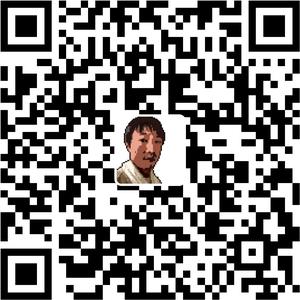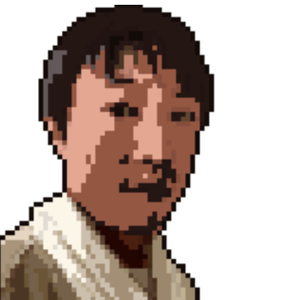Section B
Directions: In this section, you are going to read a passage with ten statements attached to it. Each statement contains information given in one of the paragraphs. Identify the paragraph from which the information is derived. You may choose a paragraph more than once. Each paragraph is marked with a letter. Answer the questions by marking the corresponding letter on Answer Sheet 2.
A Club Where Lions Dance and Traditions Take Root
A). The first thing you notice in the staircase to the fourth-floor studio on Canal Street in Manhattan, New York, is the measured thumping (嘭嘭声) coming from behind a metal door. Just beyond the entrance, large lion masks were twisting and turning to the drum-beat. On a recent Friday evening, the teenagers made their way across the studio floor as they practiced Chinese lion dancing.
B). “You want to play in a circle” Victor Fong, aged 24, told his students at the New York Chinese Freemasons Athletic Club. “Take it slow and do it again.” The dance group, made up of 60 members, performs throughout the year but was now preparing for its biggest events Chinese Lunar New Year celebrations, which will begin on Saturday and conclude on February 15. Teenagers comprise about half of the group, many of whom began lion dancing at the age of 14. About 100 current and past members of the dance group — which has been performing since 1956 — will be among the 220 groups marching through Chinatown in Manhattan for the 18th Lunar New Year Parade on February 5.
C). Mr. Fong has been involved in the organization since he was 15 and began teaching lion dancing three years ago. But the club also acts as a recreation center and safe haven(庇护所) for teenagers, with video games readily available. As many as 20 students show up after school. “The basic requirement for hanging out here is you have to learn how to lion dance,” Mr. Fong said. While that is not a formal requirement for being a member, everyone finds a way to participate in the Lunar New Year Parade, whether it’s by dancing, carrying a flag or beating a drum.
D). Alvin Chau, aged 26, is an environmental consultant by day and a lion dancer on weekends. He has been a club member for 10 years and joined because of an interest in lion dance. “We’re a big family,” he said, shaking hands with other members as they walked through the door. “You know everyone.”
E). It is believed that the lion dance began in the third century. Stories vary about how lion dancing came to be, but most of them include a monster named Nian who would terrorize a village. The villagers finally banded together and scared the beast away with firecrackers (爆竹) and drums. While lions are not native to China, some versions of the story include the villagers creating a monster of their own in the shape of a lion to fight off the beast.
F). Today, the dancers travel across Chinatown going from business to business to bring good luck for the coming year. The new year — according to the Chinese lunar calendar — will begin on Saturday and marks the Year of the Rooster (鸡年), which is thought to be a symbol of positivity. “It’s almost like the dark night is ending and the sun is coming up,” said Ya Yung Teng, the digital collections coordinator for the Museum of Chinese in America. “It’s hopeful that we’re going to have a new day.” Roosters and chickens are not particularly strong creatures, Ms. Teng said, but they are numerous. “In a way,” she said, the rooster “stands for ‘We the People.’ ”
G). The lion head and tail are operated by two people. As one person controls the head, a second follows under a train of fabric representing the body. The dancers move in harmony as they imitate the animal’s natural movements in the wild, including the aggressiveness of an attack. A lion head figure weighs under 10 pounds and sits squarely on the dancer’s shoulders. Inside, the dancer manipulates strings that open and close the lion’s eyes, shake its ears and open its mouth to reveal a fire-orange tongue.
H). “A good lion dancer will imitate a living creature,” said Karlin Chan, aged 59, who heads the athletic club’s community public relations. “I started lion dancing when I was a kid,” he said. “Chinatown was much smaller then and it was a celebration with fireworks and firecrackers, which added a lot of flavor and meaning to it.”
I). Mr. Chan buys a new lion head each year when he travels to China. A head costs about $1,500. “If you want the good stuff, the quality, you have to see it for yourself,” he said. “I’ll inspect the product before we put it in the container and ship it over.” Mr. Chan, who has been involved with the club for nearly 50 years, said that passing the dance from one generation to the next was vital. “You need to pass on the traditions and the culture, and this is a part of our culture,” he said. “It’s a great way to promote cultural understanding and exchange; we welcome that.”
J). For Sara Pore, aged 17, another club member, lion dance is more than just tradition; it provides a creative outlet. “Lion dancing started 2,000 years ago — that’s incredible,” she said. “But what makes you a competent lion dancer is that there’s a sense of imagination involved. Lion dancing teaches competence in leadership because of this. You’re constantly forced to push yourself past your limit.”
K). Back at rehearsal (排练), Justin Le, aged 18, tied a red ribbon around his waist to practice jumping. The dancers use the ribbons to pull themselves up over their partners’ heads. The room’s ceilings are too low to wear the lion heads for jumping practice, so once up on his partner’s head, Mr. Le held out his arms as if in offering.
L). Mr. Le comes by the dance as a legacy (传承). “I was born into it,” Mr. Le said, noting that his uncle and father were club members. “Growing up, I would always watch my family and see the lion dance, and I slowly grew interested in it.” By the age of 14, he was fully enrolled in the athletic club’s lion dance group. “I value my culture and tradition, being Chinese or Asian-American. I have a lot of pride in that,” he said. “I want to contribute and give back to the community.”
- 36
- 单选题
- 分值:7.1
The lion dancers perform from door to door to bring New Year wishes to business people.
- 37
- 单选题
- 分值:7.1
The New York dance club also serves as a place for entertainment where youngsters can enjoy themselves safely.
- 38
- 单选题
- 分值:7.1
Lion dancers need to have a little imagination to perform well.
- 39
- 单选题
- 分值:7.1
There are a number of different versions about the origin of the lion dance.
- 40
- 单选题
- 分值:7.1
Some 50% of the members of a New York lion dance club are teenagers.
- 41
- 单选题
- 分值:7.1
One club member says he feels proud of his cultural tradition.
- 42
- 单选题
- 分值:7.1
Two dancers coordinate their movements, one manipulating the lion’s head and the other its body.
- 43
- 单选题
- 分值:7.1
One lion dancer compares their New York dance club to a family.
- 44
- 单选题
- 分值:7.1
Lion dance should be handed down to future generations as part of Chinese culture.
- 45
- 单选题
- 分值:7.1
One lion dancer learned how to perform from his elders.
留言数:0



